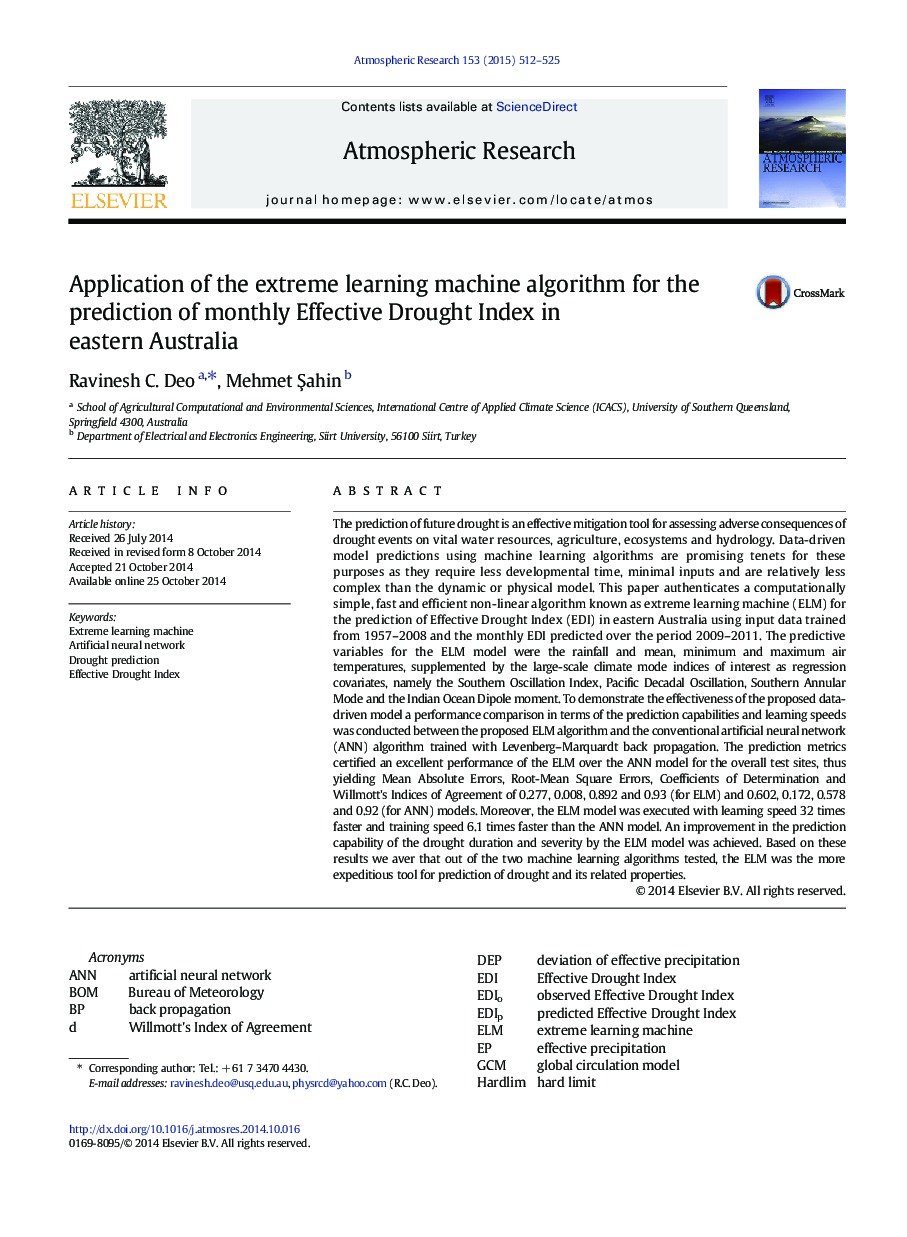| کد مقاله | کد نشریه | سال انتشار | مقاله انگلیسی | نسخه تمام متن |
|---|---|---|---|---|
| 6343456 | 1620520 | 2015 | 14 صفحه PDF | دانلود رایگان |
- We predicted the monthly Effective Drought Index using machine learning algorithms.
- Predictions by the extreme learning machine (ELM) were compared with artificial neural network (ANN).
- ELM was expeditiously efficient and yielded lower prediction errors than the ANN model.
- ELM had faster learning and training speeds compared to the ANN model.
- We conclude greater efficiency of the ELM over the ANN model in drought prediction.
The prediction of future drought is an effective mitigation tool for assessing adverse consequences of drought events on vital water resources, agriculture, ecosystems and hydrology. Data-driven model predictions using machine learning algorithms are promising tenets for these purposes as they require less developmental time, minimal inputs and are relatively less complex than the dynamic or physical model. This paper authenticates a computationally simple, fast and efficient non-linear algorithm known as extreme learning machine (ELM) for the prediction of Effective Drought Index (EDI) in eastern Australia using input data trained from 1957-2008 and the monthly EDI predicted over the period 2009-2011. The predictive variables for the ELM model were the rainfall and mean, minimum and maximum air temperatures, supplemented by the large-scale climate mode indices of interest as regression covariates, namely the Southern Oscillation Index, Pacific Decadal Oscillation, Southern Annular Mode and the Indian Ocean Dipole moment. To demonstrate the effectiveness of the proposed data-driven model a performance comparison in terms of the prediction capabilities and learning speeds was conducted between the proposed ELM algorithm and the conventional artificial neural network (ANN) algorithm trained with Levenberg-Marquardt back propagation. The prediction metrics certified an excellent performance of the ELM over the ANN model for the overall test sites, thus yielding Mean Absolute Errors, Root-Mean Square Errors, Coefficients of Determination and Willmott's Indices of Agreement of 0.277, 0.008, 0.892 and 0.93 (for ELM) and 0.602, 0.172, 0.578 and 0.92 (for ANN) models. Moreover, the ELM model was executed with learning speed 32 times faster and training speed 6.1 times faster than the ANN model. An improvement in the prediction capability of the drought duration and severity by the ELM model was achieved. Based on these results we aver that out of the two machine learning algorithms tested, the ELM was the more expeditious tool for prediction of drought and its related properties.
Journal: Atmospheric Research - Volume 153, February 2015, Pages 512-525
